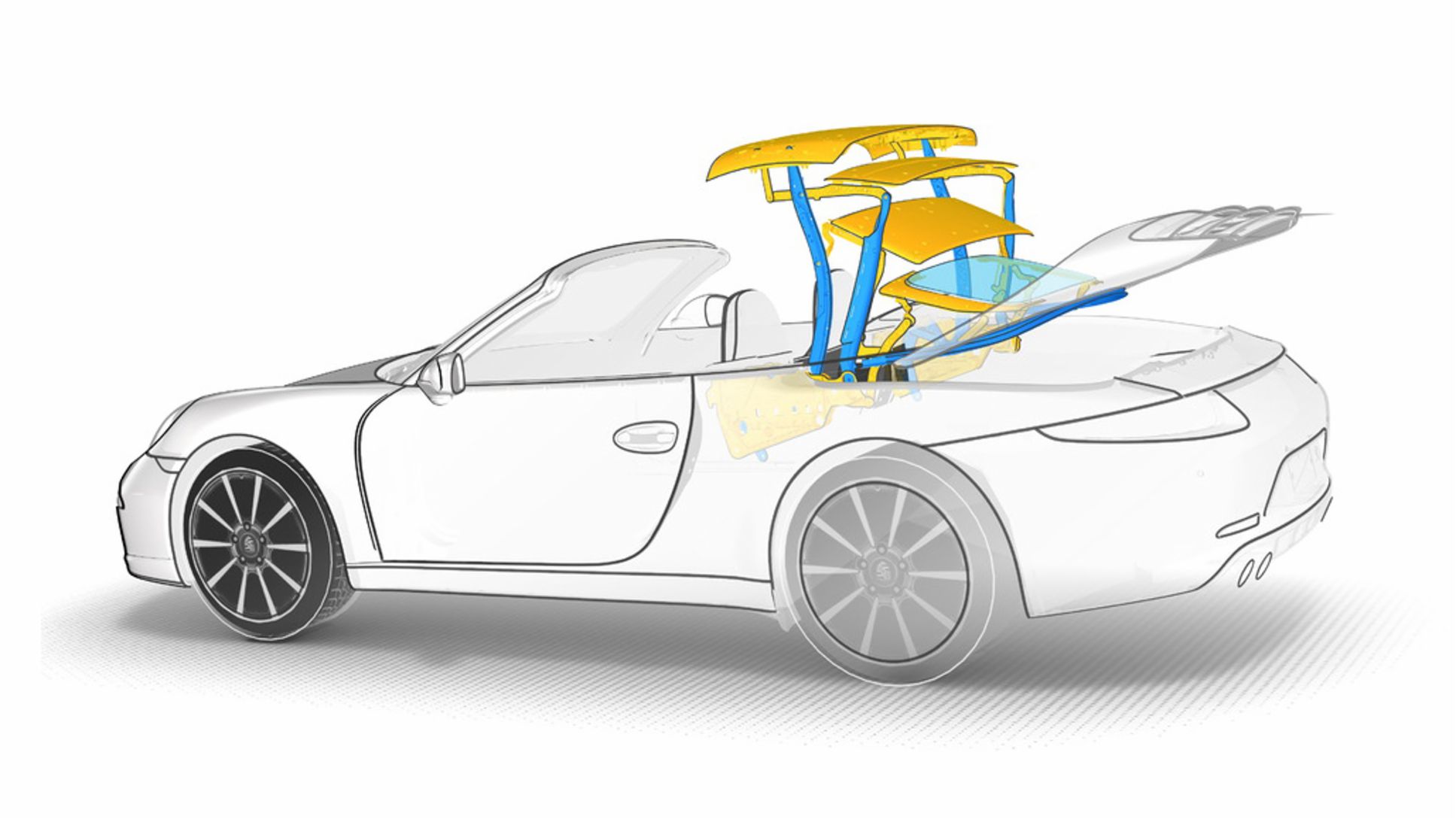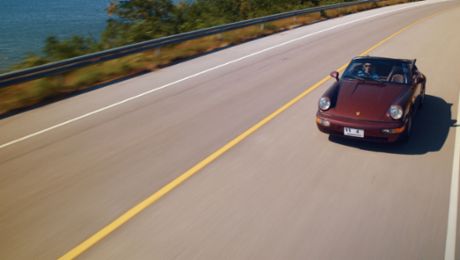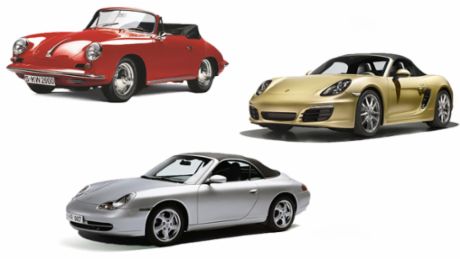For 50 years now, around one out of three 911 sports cars has been a cabriolet or Targa. According to the sales figures, as many convertible Boxster cars have been sold as fixed roof Cayman cars. The advanced development of all these open cars begins long before the actual project start for the entire vehicle. First, the design constraints are laid down for the convertible top system together with package and styling requirements that must be met.
In this approach, first the stowage concept for the roof frames is developed, and the lateral partitions of the roof frame are established. The kinematics with all its pivot points is calculated next. With the so-called “thread test", tests are conducted on especially sensitive vectors to determine whether the convertible top can move free of stresses when it is opened or closed. Once all clearances and parameters have been established, the entire cycle of movements is simulated. The calculation required for this is so complex that it runs for an entire day on the servers at the Porsche Development Centre.
It still holds, however, that the benefits of simulation are limited in convertible top system development: it is impossible to predetermine accurately all of the reactions in the interaction of fabric and glass, links and bows. The superior know-how of the Porsche engineers is once more proven by the fact that the results of simulation and practical tests are largely in accordance with initial test samples. Only once the feasibility of the chosen convertible top design has been confirmed by simulation and positive results in tests on an initial functional sample is production initiated in cooperation with a system partner.
All convertible top systems meet the most stringent quality requirements.
At Porsche, all convertible top systems are subject to the same very stringent quality requirements. That is why the same electric convertible top lock is used in the 911 Cabriolet and the Boxster, for instance. It works with a pulling hook that latches in a fitting on the windscreen frame with a long reach of exactly 40 millimetres. Afterwards, a very powerfully designed module pulls the top into its final position. In addition, all systems are equipped with an emergency actuator, so that the top can also be closed manually.
Another feature of the Porsche convertible tops is the outstanding finish quality. Conventional longitudinal seams are executed with what is known as an edge fold: one panel of fabric is folded in and sewn together with a second panel, forming a step between the two fabric panels. On Porsche convertible tops, the two fabric panels are instead folded in at a right angle, lined with what is known as Meltex tape and sewn. This way, the seam is virtually invisible under the top surface and is twice as waterproof owing to the Meltex tape.
The connection to the glass rear window has reached a new level of quality in the Porsche convertible tops as well. One layer of the convertible top cover is routed to the glass and backs the glass in the PU foaming of the glass panel. This creates a virtually smooth and stepless transition between the soft top, the joining PU foam and the glass.
The 100,000 kilometre torture test: The “combined convertible top test"
The final hurdle before production release is the “combined convertible top test" developed by Porsche, briefly referred to as “KVV" with its German initials. In this test procedure, 100,000 kilometres of real driving by customers is simulated on various test stands. Among other things, the long-term quality of the top covering is tested as well as the operation and functional reliability of the kinematics. The convertible top systems are exposed to temperatures from -20° C to +60° C and have to perform around 1,000 convertible top activation cycles at simulated poor road conditions without a hitch. Contamination on any of the moving components must not lead to excessive wear and tear either.
It is only once all these conditions are met that the Porsche convertible top system goes into production. Porsche specialists make preparations for production in cooperation with the system partner, who later delivers the ready-to-install convertible top to the assembly line.
Consumption data
911 Cabriolet model range: Combined fuel consumption: 10.0 – 8.4 l/100 km; CO₂ emission: 235 – 202 g/km
Boxster: Combined fuel consumption: 8.4 – 7.9 l/100 km; CO₂ emission: 195 – 183 g/km
Cayman: Combined fuel consumption: 8.4 – 7.9 l/100 km; CO₂ emission: 195 – 183 g/km




